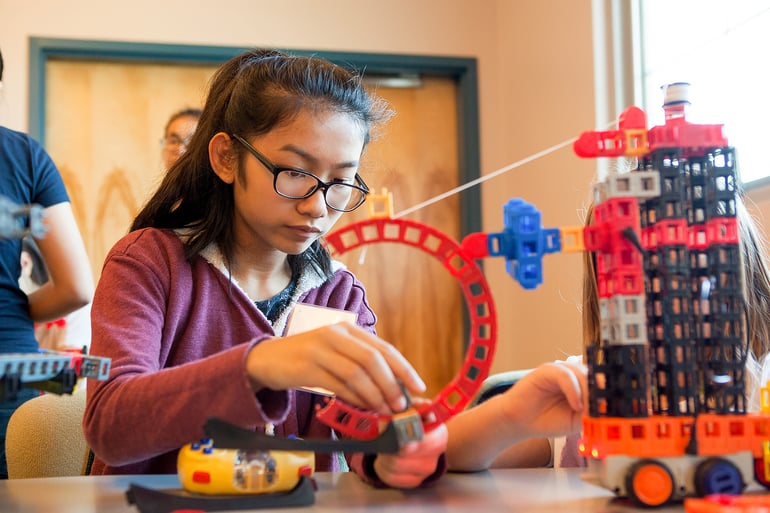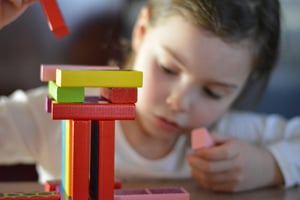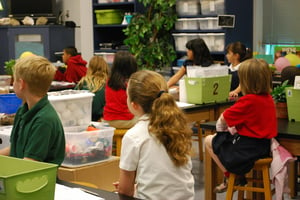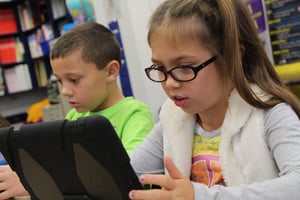
We all learned the scientific method in school, and you may still have a few preconceived ideas about it because of your experience. Maybe you remember it as a structured approach used for science fair projects or lab experiments. This rigid view that’s applied in science class is not applicable to everyday life. But the scientific method shouldn’t be seen as inflexible or exclusive to the science classroom. In fact, you use the scientific method every day. Think of it as a logical process for solving a problem and gaining knowledge.
Everyday scientific thinking
Think back to this morning. Most people start their day by drinking coffee. Was your coffee hot? You made an observation. Did you wonder if it was too hot for you to drink yet? You asked a question. Based on your experience drinking coffee, you may have formed a hypothesis and decided if it was too hot for you to drink based on how long it had been since you poured it. Did you touch the cup or move your hand over the top to feel the warmth? You conducted an experiment. After testing the heat, you probably analyzed the data to conclude if the coffee was too hot to drink.
In deciding when your coffee was ready to drink, you naturally used the scientific method. You thought about the content of science, used reasoning processes to solve a problem, and applied your findings. In this case, hopefully you didn’t burn your tongue!
Actually, you've been naturally applying scientific thinking to everyday decisions since you were a child. Do you remember crying to get your parents’ attention? That process allowed you to predict, verify, or refute a hypothesis. Crying most likely got their attention, so you applied your new-found knowledge to improve your world.
 As long as you have been investigating the world around you, you’ve probably been following the steps of the scientific method. The process follows steps in a specific order, but they are better understood as flexible and circular. Think back to your coffee experiment this morning. You followed the steps by making an observation, asking a question, forming a hypothesis, making predictions, testing the hypothesis, analyzing your results, and drawing conclusions.
As long as you have been investigating the world around you, you’ve probably been following the steps of the scientific method. The process follows steps in a specific order, but they are better understood as flexible and circular. Think back to your coffee experiment this morning. You followed the steps by making an observation, asking a question, forming a hypothesis, making predictions, testing the hypothesis, analyzing your results, and drawing conclusions.
But you most likely did not do this once, in a step-by-step order. Maybe your hypothesis was wrong, and your coffee was too hot. Did you consider your experiment? If you burned your tongue even after touching the cup or moving your hand over the top, you probably brainstormed another method to test the coffee before you risked burning your tongue again. If your coffee was too hot to drink after your first test, I’m sure you tested it again instead of giving up and not having coffee at all. And what if you waited too long and the coffee was too cold? That created a new problem with possible solutions. If you are an avid coffee drinker, you have probably mastered this process through multiple attempts, but still circle around this process instinctually.
Scientific thinking in the 21st century classroom
This same scientific thinking can apply to the everyday 21st century classroom by teaching children to solve more significant everyday problems. Although it is still important to teach the step-by-step approach to the scientific method, including the terminology and definitions, it can be experienced in a less formal way that incorporates 21st century skills. These skills can include critical thinking, creativity, and collaboration, that help students generate new knowledge and collaborate to solve problems that are relevant to them. By teaching young children the basic approach first, you can scaffold their learning and move on to more innovative approaches to scientific thinking by having children design their own investigations to solve problems using the scientific method as a guide.
Steps of the scientific method
First, teach or review the steps of the scientific method with your students. By using real world examples, students can see how scientific thinking isn’t exclusive to science class. They can also relate to the process and apply their thinking to larger problems. It’s unlikely that your students drank coffee this morning, but maybe their cereal was soggy, their shoes wouldn’t stay tied, or the class is experiencing a problem. Take them through the steps of the scientific method as they recall the challenge at hand.
- Make an observation: What do you see around you that causes a problem?
- Ask a question: What causes this problem?
- Form a hypothesis: What is a potential answer to the question that can be tested?
- Make a prediction: What outcome do you expect if the hypothesis is correct?
- Test the hypothesis: Perform an experiment.
- Analyze the results: What does your data show?
- Reflect and draw conclusions: Discuss your results to see if your hypothesis was correct. If not, why? Can you repeat the experiment?
Incorporating scientific thinking in the 21st century classroom
 After your students have a basic understanding of the scientific method, it’s a perfect time to create opportunities for them to apply the seven essential steps of scientific thinking to their interests. By using a project based learning approach, you can help students develop 21st century skills. Students need these skills to achieve success in careers during the information age.
After your students have a basic understanding of the scientific method, it’s a perfect time to create opportunities for them to apply the seven essential steps of scientific thinking to their interests. By using a project based learning approach, you can help students develop 21st century skills. Students need these skills to achieve success in careers during the information age.
Project-based learning incorporates these skills by using critical thinking, creativity, collaboration, and communication (the 4 Cs). By working together to solve a problem, students learn social and leadership skills. Solving problems also encourages students to take initiative, be productive, and flexible. By researching solutions to a problem, students develop information literacy, media literacy, and technology literacy.
We all run into problems in our everyday lives. If we take the time to understand the root of the problems and why they occur, we can easily brainstorm solutions. That’s critical thinking! Help your students make this connection by asking them to reflect on problems in their community.
Maybe your students have noticed that there is litter around the school. Are there enough trash cans? Does the school have a recycling program? Maybe your students notice that the carpool process is slow. Are there crossing guards? Is someone directing traffic? These real world problems are relatable to students, and realistically solvable. There are also multiple approaches to solving the problems that involve creativity and innovation.
Solving a problem with 21st century skills
 Once you have helped your students determine a problem relevant to their community, it’s time for them to form a hypothesis by determining a potential answer that can be tested. It may be best to split students into groups. It is important for students to develop collaboration, social, and leadership skills that are easier to acquire in small groups. You can also ask students to collaborate with other groups after they have brainstormed solutions. Remember that the process is circular, and they may need to go back to the drawing board after collaborating with each other. Depending on the depth of the project, you may decide for the whole class to solve the problem together, in small groups, or have groups collaborate to test the hypothesis and analyze their findings.
Once you have helped your students determine a problem relevant to their community, it’s time for them to form a hypothesis by determining a potential answer that can be tested. It may be best to split students into groups. It is important for students to develop collaboration, social, and leadership skills that are easier to acquire in small groups. You can also ask students to collaborate with other groups after they have brainstormed solutions. Remember that the process is circular, and they may need to go back to the drawing board after collaborating with each other. Depending on the depth of the project, you may decide for the whole class to solve the problem together, in small groups, or have groups collaborate to test the hypothesis and analyze their findings.
Bringing the scientific method to life
By showing students that scientific thinking is natural and applicable to everyday life, you can bring the scientific method to life outside of the science classroom. Children learn best by doing, and relating learning to their lives. By guiding students to solve problems in their community, you will help them develop 21st century skills through innovation and scientific thinking.
.png?width=1270&height=453&name=Copy%20of%20Kid%20Spark%20Logo%20(Horizontal%20-%20Full%20Color).png)